Last month I started writing about how to stay healthy during the winter months, a vast and diverse topic and as a result, one that I have split into two halves, even then only really scratching the surface. Ideally we would all spend more time concentrating on our health but modern life, especially in the city, just isn’t like that, so what I offer here and in the previous blog (part one is copied below this) are a few simple suggestions to help slightly readdress the balance, without attempting to create some sort of impossible and unachievable regime. These are ideas to dip in and out of, supplements rather than alternatives. I can’t stand reading patronising reports from “holier than thou” health gurus who want us to know that if only we could be more like them, our lives would be so much better. I once had a yoga teacher like that and his calm smugness used to leave me more tense after a class that before, a reaction akin to listening to supposedly relaxing “elevator music”…..GRRRR! Anyway, back to the wonderful world of foraging and hopefully below I have created a few good reasons to get outdoors, pick some wild plants, explore the countryside and generally not spend the entire season plagued by winter colds or stuck indoors with all the other snotty whingers. Happy winter time everyone and thanks to wonderful Ellie for being in the photo above.
5. The Mighty Wild Green Smoothy.
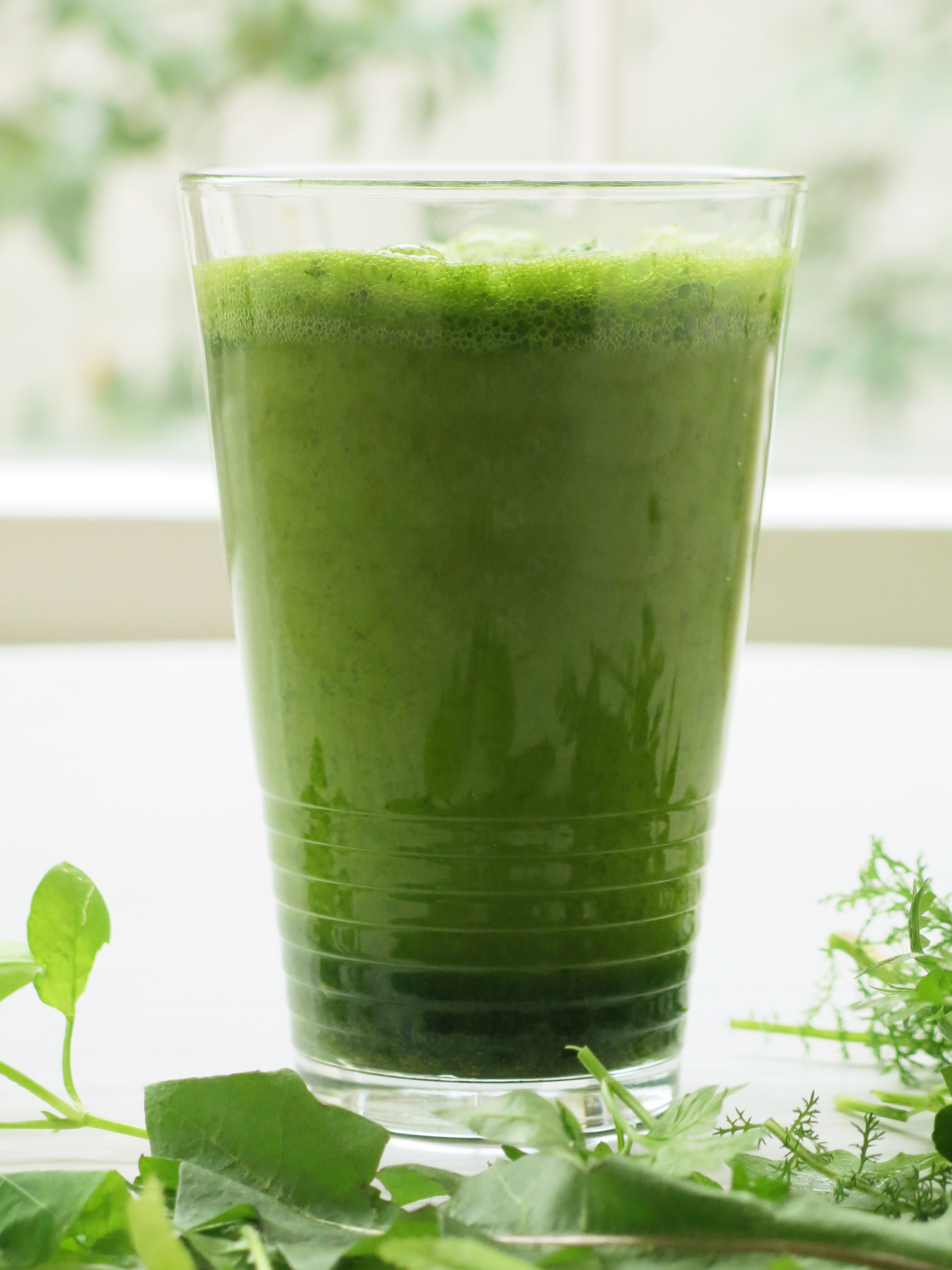 Just 10 minutes in my local park and a quick trip to the shops produced all the ingredients I needed to make a weeks worth of these Super Food drinks. Cleanse your liver, boost your immune system, take onboard a truck load of nutrients, vitamins, minerals, anti oxidants and phytonutrients all in one quick, simple to make drink. Unlike me, you don’t need to make this with fifteen or so wild Winter salad plants, but they will certainly boost the effectiveness of this or any similar health drink if you do. I added Yarrow, Chickweed, Dandelion, Winter Cress, Hedge Mustard, Cleavers, Stinging Nettle, young Linden Tree leaves, Mallow, Cow Parsley, Nipple Wort, Sow Thistle and a few others…Details on these plants and what they are good for, in this blog from last November https://www.foragelondon.co.uk/spring-time-in-november The recipe is simple so adjust the quantities depending on how much you want to drink (half a litre is plenty) and the ingredients based on what you have to hand. Blend 500ml of good quality apple juice (or a mix of juice and water if you prefer), with 3-4 handfuls of green leaves, wild ones and/or spinach, chard etc, half an Avocado, juice from one Lemon, an inch lump of root Ginger, a glove of Garlic (this does make for a more potent drink, especially in the morning, so let’s say it’s optional), a big pinch of Turmeric and if you fancy, some Chilli or Cayenne..to go in a sweeter direction you could add honey instead of the last two spices. And once you get into making these drinks it becomes a very enjoyable daily ritual.
Just 10 minutes in my local park and a quick trip to the shops produced all the ingredients I needed to make a weeks worth of these Super Food drinks. Cleanse your liver, boost your immune system, take onboard a truck load of nutrients, vitamins, minerals, anti oxidants and phytonutrients all in one quick, simple to make drink. Unlike me, you don’t need to make this with fifteen or so wild Winter salad plants, but they will certainly boost the effectiveness of this or any similar health drink if you do. I added Yarrow, Chickweed, Dandelion, Winter Cress, Hedge Mustard, Cleavers, Stinging Nettle, young Linden Tree leaves, Mallow, Cow Parsley, Nipple Wort, Sow Thistle and a few others…Details on these plants and what they are good for, in this blog from last November https://www.foragelondon.co.uk/spring-time-in-november The recipe is simple so adjust the quantities depending on how much you want to drink (half a litre is plenty) and the ingredients based on what you have to hand. Blend 500ml of good quality apple juice (or a mix of juice and water if you prefer), with 3-4 handfuls of green leaves, wild ones and/or spinach, chard etc, half an Avocado, juice from one Lemon, an inch lump of root Ginger, a glove of Garlic (this does make for a more potent drink, especially in the morning, so let’s say it’s optional), a big pinch of Turmeric and if you fancy, some Chilli or Cayenne..to go in a sweeter direction you could add honey instead of the last two spices. And once you get into making these drinks it becomes a very enjoyable daily ritual.
6. Vitamin D and The Great Outdoors.
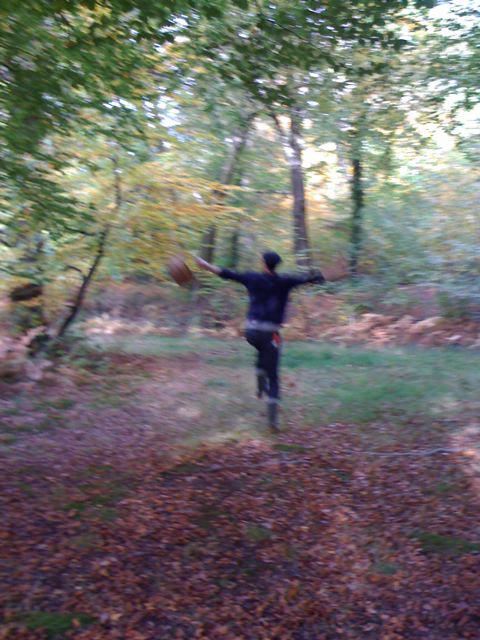 Ever noticed how the people who get the least colds are the ones who spend their working days outdoors? Rather than being intimidated by the cold weather and hiding in doors hugging the radiator, they face it head on, often without any choice in the matter; if you work outside, you work outside, regardless of the seasons. Vitamin D is absorbed directly through the skin, so the amount available to us during an English Winter is pretty pathetic but anyone working in the sun all year will have built up a better reserve than someone who spends most of their time in an office. Either way, a Vitamin D3 supplement is a good idea to help regulate the immune system and essential for absorbing calcium and phosphate, both important for healthy teeth and bones, as well as helping reduce risk of heart disease. Supplement sprays are available and Vitamin D can also be found in limited amounts in a few foods such as eggs and oily fish. What else does spending time outdoors do for us? Well, when it’s cold we need to move about a lot so apart from releasing feel good endorphins that come with any sort of physical activity, it gets the lymphatic system working properly, which in turn is part of the immune system. It’s also worth looking at our winter diet and not just accepting that it’s the season to eat endless sweet things; 70% of the immune system is in or related to our gut so overloading on sugars will give it loads of unnecessary work to do when it could be getting on with other, more health enhancing work. About this subject, my good friend and Nutritional Therapist Lorna Driver Davies says….
Ever noticed how the people who get the least colds are the ones who spend their working days outdoors? Rather than being intimidated by the cold weather and hiding in doors hugging the radiator, they face it head on, often without any choice in the matter; if you work outside, you work outside, regardless of the seasons. Vitamin D is absorbed directly through the skin, so the amount available to us during an English Winter is pretty pathetic but anyone working in the sun all year will have built up a better reserve than someone who spends most of their time in an office. Either way, a Vitamin D3 supplement is a good idea to help regulate the immune system and essential for absorbing calcium and phosphate, both important for healthy teeth and bones, as well as helping reduce risk of heart disease. Supplement sprays are available and Vitamin D can also be found in limited amounts in a few foods such as eggs and oily fish. What else does spending time outdoors do for us? Well, when it’s cold we need to move about a lot so apart from releasing feel good endorphins that come with any sort of physical activity, it gets the lymphatic system working properly, which in turn is part of the immune system. It’s also worth looking at our winter diet and not just accepting that it’s the season to eat endless sweet things; 70% of the immune system is in or related to our gut so overloading on sugars will give it loads of unnecessary work to do when it could be getting on with other, more health enhancing work. About this subject, my good friend and Nutritional Therapist Lorna Driver Davies says….
“It can be easy to over-indulge during the festive season (alcohol, rich foods and sweets) but these kind of foods do not support those with an already ‘wobbly’ or low immune system (we know anyway that sugar can have a complex effect on your cells and trigger oxidative damage). Try to minimise what you do consume (but there is no need to be fanatical) and pick and choose rather than eat and drink everything in sight. I recommend daily green vegetable smoothies with fruit for immune boosting nutrients, blended with a pinch of turmeric, chilli and a thumb sized piece of ginger. Vitamin D is also essential during the winter to keep our mind, mood and immune system well and as we can only get about 10 % of what we need from our diet, without much sunlight we should supplement. Use a vitamin D spray such as this every day.” https://www.betteryou.com
7. Echinacea Tincture and Seaweed Nasal Sprays (don’t scoff, read the report).
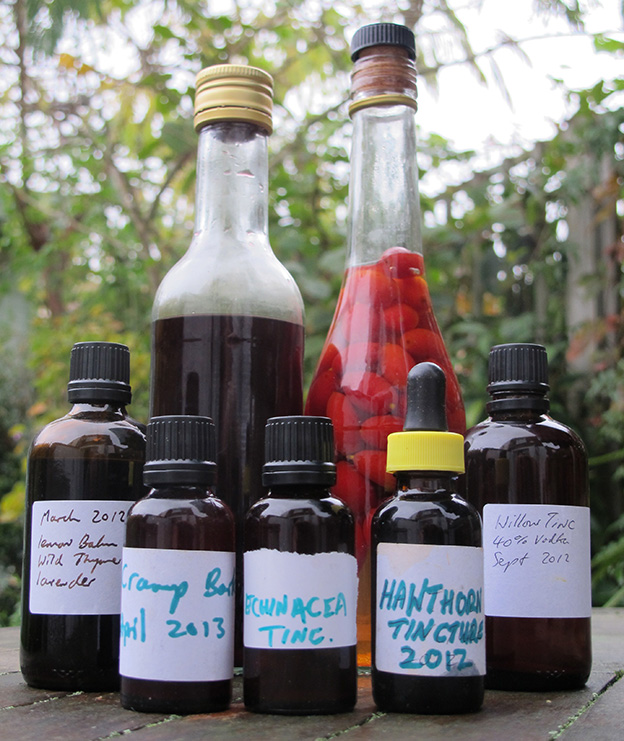 First things first. Undiluted, good quality Echinacea tincture should give you a “metallic” sensation on the tip of your tongue. This lets us know that it was made from potent roots and leaves and not the less effective upper parts of the plant or from plants that although technically Echinacea, may not have grown in the right conditions or may be another similar species, not, the prized Echinacea purpurea. It also lets us know the tincture has been made with something approaching a 1:2 ratio of plants to liquid, unlike many lesser, cheaper versions, capsules etc. Exactly how Echinacea boosts the immune system is still a topic for debate; not one specific chemical or compound can be nailed down as the reason, rather a combination of these all working together. Historically, it’s been used for hundreds of years to treat everything from the common cold to rattle snake bites (I think the assumption here was that it helped purify the blood), but in the present day it’s sold generally to help fight cold and flu symptoms and also to prevent the onset of these. Alternative Winter health tinctures recommended by the lovely people at Herbs Hands Healing, include Olive Leaf, Siberian Ginseng, Oregano, Elderberry or Turmeric. Here’s a link to their online shop, if you want good advice and good quality products, this is the place to go. https://herbs-hands-healing.co.uk I have also heard some great things about Carrageen Seaweed, also known as Irish Moss and it has been recently proven to reduce the duration of the common cold, when used directly as a nasal spray…here’s some details from a recent study.
First things first. Undiluted, good quality Echinacea tincture should give you a “metallic” sensation on the tip of your tongue. This lets us know that it was made from potent roots and leaves and not the less effective upper parts of the plant or from plants that although technically Echinacea, may not have grown in the right conditions or may be another similar species, not, the prized Echinacea purpurea. It also lets us know the tincture has been made with something approaching a 1:2 ratio of plants to liquid, unlike many lesser, cheaper versions, capsules etc. Exactly how Echinacea boosts the immune system is still a topic for debate; not one specific chemical or compound can be nailed down as the reason, rather a combination of these all working together. Historically, it’s been used for hundreds of years to treat everything from the common cold to rattle snake bites (I think the assumption here was that it helped purify the blood), but in the present day it’s sold generally to help fight cold and flu symptoms and also to prevent the onset of these. Alternative Winter health tinctures recommended by the lovely people at Herbs Hands Healing, include Olive Leaf, Siberian Ginseng, Oregano, Elderberry or Turmeric. Here’s a link to their online shop, if you want good advice and good quality products, this is the place to go. https://herbs-hands-healing.co.uk I have also heard some great things about Carrageen Seaweed, also known as Irish Moss and it has been recently proven to reduce the duration of the common cold, when used directly as a nasal spray…here’s some details from a recent study.
https://mrmjournal.biomedcentral.com/articles/10.1186/2049-6958-9-57
8. Everything from Mulled Wine to Spicy Chicken Soup.
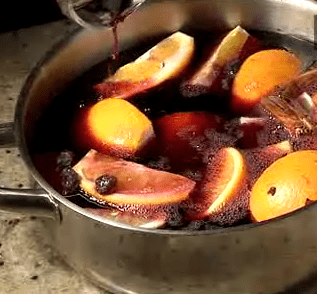 It goes without saying that a healthy diet is going to help with a healthy life style, especially over the chilly Winter months, but what goes into that diet doesn’t have to be bland, complicated or unappealing, as we have already discussed last month ( and copied below) with the use of spices, wild mushrooms, berries . It turns out that writing about the topic of boosting the immune system is something of an endless task; our diet, our life style, stress levels, alcohol consumption, the amount we do or don’t exercise, age, general health, these are all factors and all worth looking at in more detail, but let’s be honest, who’s got the time..not even me and I have spent plenty of time researching this blog. So, to lump a few topics together, I’d just like to mention some foods that are great in a healthy diet but vital in an immune boosting one. Brassicas i.e. all and any member of the cabbage family, that’s cabbages, sprouts, broccoli, cauliflower, cress, water cress, numerous wild cress and mustard varieties, mustard greens, chard, radish, horse radish etc etc etc. The darkest of the domestic varieties are best, as are any veg that are a deep purple colour. Avocado, sweet potato, oily fish, mushrooms, black tea, oats and barley are also terrific ingredients in an immune boosting diet; want to know why? You’ll have to do your own research as I am running out of room here. Just two things left to mention really, number one; spicy chicken soup. I always assumed it was just something easy and warming that yiddish grandmothers recommended out of tradition; it turns out that the amino acid cysteine, released from chicken during cooking, helps block the migration of inflammatory white cells, thus helping clear the bronchial tubes. Add to this the wonderful effects of chilli and garlic, discussed in part 1, and you have a powerful and delicious weapon to help fight the good fight. And finally, Mulled Wine, yes, Mulled Wine; much has been written about the beneficial (and also possibly detrimental) effects of Resveratrol, a natural phenol found in various plants including red wine grapes and a study in California last year, strongly suggests that Ethanol, in moderate doses, helps boost the immune system as well. Chuck in a stick or two of super spices Cinnamon and Cloves, the benefits of which are manyfold (anti bacterial, anti microbial, anti septic, anti inflammatory, to name but a few), and there’s a pretty decent excuse to drink some of this delicious, mood enhancing Winter tonic, not that anyone really needs one, do they.
It goes without saying that a healthy diet is going to help with a healthy life style, especially over the chilly Winter months, but what goes into that diet doesn’t have to be bland, complicated or unappealing, as we have already discussed last month ( and copied below) with the use of spices, wild mushrooms, berries . It turns out that writing about the topic of boosting the immune system is something of an endless task; our diet, our life style, stress levels, alcohol consumption, the amount we do or don’t exercise, age, general health, these are all factors and all worth looking at in more detail, but let’s be honest, who’s got the time..not even me and I have spent plenty of time researching this blog. So, to lump a few topics together, I’d just like to mention some foods that are great in a healthy diet but vital in an immune boosting one. Brassicas i.e. all and any member of the cabbage family, that’s cabbages, sprouts, broccoli, cauliflower, cress, water cress, numerous wild cress and mustard varieties, mustard greens, chard, radish, horse radish etc etc etc. The darkest of the domestic varieties are best, as are any veg that are a deep purple colour. Avocado, sweet potato, oily fish, mushrooms, black tea, oats and barley are also terrific ingredients in an immune boosting diet; want to know why? You’ll have to do your own research as I am running out of room here. Just two things left to mention really, number one; spicy chicken soup. I always assumed it was just something easy and warming that yiddish grandmothers recommended out of tradition; it turns out that the amino acid cysteine, released from chicken during cooking, helps block the migration of inflammatory white cells, thus helping clear the bronchial tubes. Add to this the wonderful effects of chilli and garlic, discussed in part 1, and you have a powerful and delicious weapon to help fight the good fight. And finally, Mulled Wine, yes, Mulled Wine; much has been written about the beneficial (and also possibly detrimental) effects of Resveratrol, a natural phenol found in various plants including red wine grapes and a study in California last year, strongly suggests that Ethanol, in moderate doses, helps boost the immune system as well. Chuck in a stick or two of super spices Cinnamon and Cloves, the benefits of which are manyfold (anti bacterial, anti microbial, anti septic, anti inflammatory, to name but a few), and there’s a pretty decent excuse to drink some of this delicious, mood enhancing Winter tonic, not that anyone really needs one, do they.
PART ONE REVISITED
1. Garlic, in all it’s wonderful wild and non wild guises.
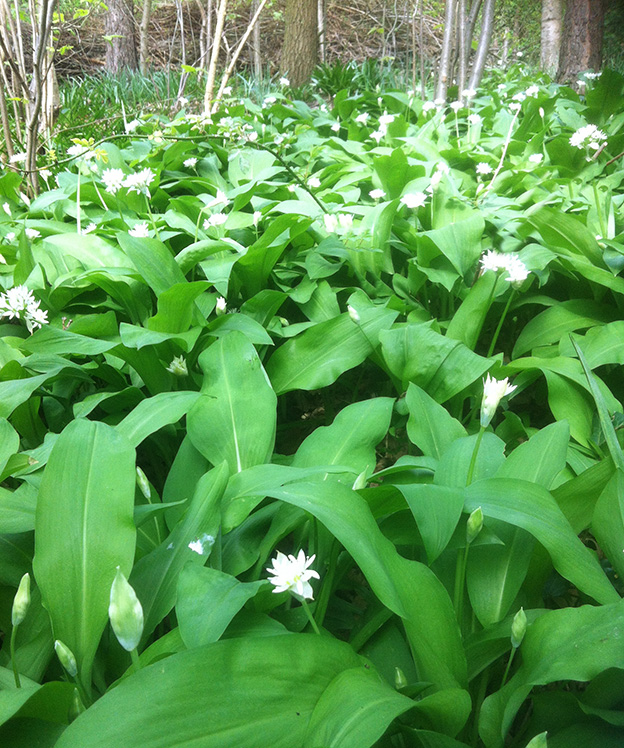 Blessed with numerous types of wild garlic, the UK has an abundance of Ransoms, Three Cornered Leek, Crow Garlic, Wild Leek and various other edible members of this Allium genus. The late Autumn and winter months offer a few of these, Wild Garlic (aka Ransoms, pictured) coming as early as February in London, but my current fav’, due mostly to it’s continued availability, is Three Cornered Leek, a non native but one that loves it here and gives us edible leaves/stems, bulbs and flowers, starting in Autumn and going all the way through to late Spring/early Summer. Equipped with numerous health enhancing properties, more so than any other easily available and delicious food I can think of, Garlic has the wonderful ability to turn “bad” cholesterol (LDL) into “good” cholesterol (HDL), to reduce blood pressure and to stabilise blood sugar levels. It’s also a very good natural antibiotic, an antiseptic and a natural expectorant (helping to thin and clear mucus). If that wasn’t enough, garlic is an excellent aid to detoxification which in turn helps to support the liver. It does this by binding with and then “destroying” heavy metals. Furthermore, garlic boosts and supports the immune system, draws out colds by drying the lungs and acts as an anti microbial and anti fungal to fight parasitic infections. WOW! And it tastes fantastic and has a multitude of culinary uses.
Blessed with numerous types of wild garlic, the UK has an abundance of Ransoms, Three Cornered Leek, Crow Garlic, Wild Leek and various other edible members of this Allium genus. The late Autumn and winter months offer a few of these, Wild Garlic (aka Ransoms, pictured) coming as early as February in London, but my current fav’, due mostly to it’s continued availability, is Three Cornered Leek, a non native but one that loves it here and gives us edible leaves/stems, bulbs and flowers, starting in Autumn and going all the way through to late Spring/early Summer. Equipped with numerous health enhancing properties, more so than any other easily available and delicious food I can think of, Garlic has the wonderful ability to turn “bad” cholesterol (LDL) into “good” cholesterol (HDL), to reduce blood pressure and to stabilise blood sugar levels. It’s also a very good natural antibiotic, an antiseptic and a natural expectorant (helping to thin and clear mucus). If that wasn’t enough, garlic is an excellent aid to detoxification which in turn helps to support the liver. It does this by binding with and then “destroying” heavy metals. Furthermore, garlic boosts and supports the immune system, draws out colds by drying the lungs and acts as an anti microbial and anti fungal to fight parasitic infections. WOW! And it tastes fantastic and has a multitude of culinary uses.
2. Immune boosting mushrooms.
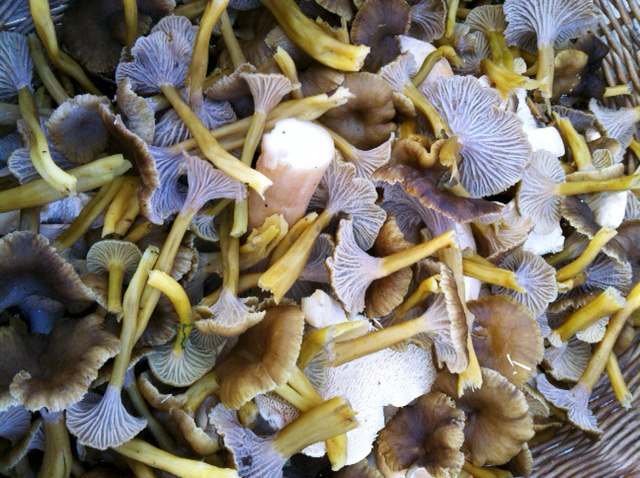 The season to forage for most of these may be behind us but a few of the most effective are always available to buy online, some with wonderful names like Reishi, Chaga, Agaricon and Turkey Tail (well known in Chinese herbal medicine), can be consumed as a powder, a tablet or in a tea, while others like Oyster Mushrooms and Shitaki Mushrooms are more familiar as popular foods. Last year I started researching some of these in more detail and was pleased to find that one of our most common “bracket” mushrooms has many of the incredible medicinal properties that I had assumed only came from more exotic species. The Birch Polypore, also called Birch Conk or Razor Strop Fungus, is a very easy to ID mushroom, growing on dead or dying Birch trees and found all across the UK. I won’t go into all the ID details here but this is a very chunky, rubbery bracket, with a mid brown top side and a white/cream underside. Otzi, the 5300 year old ice man, was found with pieces of this fungus and it’s medicinal uses are well documented throughout history, in more recent times having been proven to be anti bacterial, anti viral, anti microbial and also great at stimulating the immune system. American Mycologists like Robert Rogers and Paul Stamets have demonstrated that this mushroom’s numerous triterpenes, betulins, betulinic and agaric acids and beta glucans, give it tumour suppressing and immune boosting properties, making it, and more commonly used, Turkey Tail Mushroom, an excellent complimentary medicine for anyone undergoing more conventional treatments for cancer and other auto immune diseases. I have no desire to dish out unqualified medical advice but anyone interested in this topic should consider buying Robert Rogers book, The Fungal Pharmacy.
The season to forage for most of these may be behind us but a few of the most effective are always available to buy online, some with wonderful names like Reishi, Chaga, Agaricon and Turkey Tail (well known in Chinese herbal medicine), can be consumed as a powder, a tablet or in a tea, while others like Oyster Mushrooms and Shitaki Mushrooms are more familiar as popular foods. Last year I started researching some of these in more detail and was pleased to find that one of our most common “bracket” mushrooms has many of the incredible medicinal properties that I had assumed only came from more exotic species. The Birch Polypore, also called Birch Conk or Razor Strop Fungus, is a very easy to ID mushroom, growing on dead or dying Birch trees and found all across the UK. I won’t go into all the ID details here but this is a very chunky, rubbery bracket, with a mid brown top side and a white/cream underside. Otzi, the 5300 year old ice man, was found with pieces of this fungus and it’s medicinal uses are well documented throughout history, in more recent times having been proven to be anti bacterial, anti viral, anti microbial and also great at stimulating the immune system. American Mycologists like Robert Rogers and Paul Stamets have demonstrated that this mushroom’s numerous triterpenes, betulins, betulinic and agaric acids and beta glucans, give it tumour suppressing and immune boosting properties, making it, and more commonly used, Turkey Tail Mushroom, an excellent complimentary medicine for anyone undergoing more conventional treatments for cancer and other auto immune diseases. I have no desire to dish out unqualified medical advice but anyone interested in this topic should consider buying Robert Rogers book, The Fungal Pharmacy.
3. Turmeric, Ginger, Chilli and many other wonderful spices.
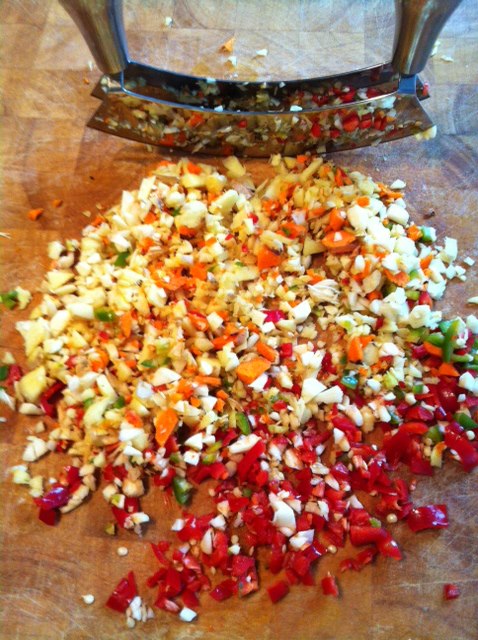 The basic rule of thumb is this; cook with spices, as many of them as you can, all winter long. Without doubt, the most powerful combatant of any Winter cold is my Super Spicy Blow Your Head Clean Off Immune Boosting Soup. This contains utterly masses of Turmeric, the medicinal properties of which are extraordinary; here’s just a few…anti inflammatory, anti biotic, antiseptic, analgesic, blood purifying, aids digestion and reduces wind, strengthens ligaments and lowers cholesterol. Further more, Turmeric has been used in treatments for asthma, arthritis, MS, eczema, psoriasis, to boost the immune system during chemotherapy and to slow the progression of Alzheimer’s. And that’s just one common herb that’s easily available to us and can be incorporated into almost all Winter cooking. Add to this some Garlic, the virtues of which we have already discussed and fresh or powdered chilli to help purify the blood and boost the circulation; the alkaloid Capsaicin, which gives chillies that characteristic strong, spicy flavour has been shown in laboratory studies, to be anti-bacterial, anti-carcinogenic, analgesic and anti-diabetic. Next we have Ginger, a plant I have heard described as ‘The world’s healthiest food” fantastic just cut into chunks and used as a tea (also great with slices of fresh Turmeric root added), well known for it’s calming effects on the stomach, as an immune booster and as a treatment for nausea and vomiting. Further studies have shown that Ginger is effective in helping fight ovarian and colon cancer. Obviously there are numerous ways to ingest these and many other “super food” spices we have at our disposal but if you find you have neglected your spice intake or have succumbed to a Winter cold or flu or are just generally a bit sluggish and below par, this recipe, the first section of a piece I wrote last year, will most definitely be the kick up the arse you need.
The basic rule of thumb is this; cook with spices, as many of them as you can, all winter long. Without doubt, the most powerful combatant of any Winter cold is my Super Spicy Blow Your Head Clean Off Immune Boosting Soup. This contains utterly masses of Turmeric, the medicinal properties of which are extraordinary; here’s just a few…anti inflammatory, anti biotic, antiseptic, analgesic, blood purifying, aids digestion and reduces wind, strengthens ligaments and lowers cholesterol. Further more, Turmeric has been used in treatments for asthma, arthritis, MS, eczema, psoriasis, to boost the immune system during chemotherapy and to slow the progression of Alzheimer’s. And that’s just one common herb that’s easily available to us and can be incorporated into almost all Winter cooking. Add to this some Garlic, the virtues of which we have already discussed and fresh or powdered chilli to help purify the blood and boost the circulation; the alkaloid Capsaicin, which gives chillies that characteristic strong, spicy flavour has been shown in laboratory studies, to be anti-bacterial, anti-carcinogenic, analgesic and anti-diabetic. Next we have Ginger, a plant I have heard described as ‘The world’s healthiest food” fantastic just cut into chunks and used as a tea (also great with slices of fresh Turmeric root added), well known for it’s calming effects on the stomach, as an immune booster and as a treatment for nausea and vomiting. Further studies have shown that Ginger is effective in helping fight ovarian and colon cancer. Obviously there are numerous ways to ingest these and many other “super food” spices we have at our disposal but if you find you have neglected your spice intake or have succumbed to a Winter cold or flu or are just generally a bit sluggish and below par, this recipe, the first section of a piece I wrote last year, will most definitely be the kick up the arse you need.
https://www.foragelondon.co.uk/winter-health-happiness
4. Berries Berries Berries Berries Berries.
 It’s a strange form of human arrogance that we assume bright colours in nature are all there for our benefit, either as a warning or an indication that something is particularly tasty. Some of the most beautiful mushrooms are the most deadly (so are some of the drabbest looking) and some with the most colourful and lurid caps are tasty edibles. When it comes to berries, very often the strong reds and purples are a very good indicator of the plentiful presence of anti oxidants, rather than harmful toxics, not always though, the shiny black berries of Deadly Nightshade look very tasty too. So long as we can sort the delicious from the deadly, it pays to spend the Winter months scoffing as many of these genuine Super Foods as possible. On the home front we have natives like Hawthorn, Sloe, Rowan, Cockspur, Sea Buckthorn, Crab Apples and Rose Hips (yes I realise these last 2 aren’t really berries) and a trip to the shops will produces a vast array of either out of season berries or more exotic varieties. However you choose to get your fix, and this could be anything from a Hawthorn Ketchup to a Rose Hip Vinegar or a Blueberry Compote, you will be eating masses of Vitamin C, Pectin, Flavanoids (anti inflammatory, anti viral, anti fungal, anti bacterial and aiding assimilation and absorption of other beneficial plant alkaloids), Phytonutrients (plant alkaloids and compounds designed to aid and protect the plant but enormously beneficial to human health and sadly missing from much of our modern food chain) and last but by no means least, Anti Oxidants. What exactly are these mysterious substances anyway? Well, I knew that they were chemicals that inhibited the activity of Free Radicals, but what in turn are they? In the most basic terms (that’s how I think), they are electrons that have broken loose from their intended molecule and, in this new, free state, can cause various types of cell damage making us susceptible to viruses and numerous other conditions, especially as we get older. I asked a knowledgable friend how Anti Oxidants combatted Free Radicles, did they prevent molecules splitting in the first place or form gangs that go around beating up free radicals or by whatever means, encourage free radicals to reunite with their missing partners and thus stop being free, radical and troublesome? Her answer was a few pages long but basically suggested that they did all three…I can’t honestly claim to have my head round this at all but just wanted to add something by way of research instead of just bandying these terms around without really knowing what they meant. I hope this is vaguely helpful, not just vague.
It’s a strange form of human arrogance that we assume bright colours in nature are all there for our benefit, either as a warning or an indication that something is particularly tasty. Some of the most beautiful mushrooms are the most deadly (so are some of the drabbest looking) and some with the most colourful and lurid caps are tasty edibles. When it comes to berries, very often the strong reds and purples are a very good indicator of the plentiful presence of anti oxidants, rather than harmful toxics, not always though, the shiny black berries of Deadly Nightshade look very tasty too. So long as we can sort the delicious from the deadly, it pays to spend the Winter months scoffing as many of these genuine Super Foods as possible. On the home front we have natives like Hawthorn, Sloe, Rowan, Cockspur, Sea Buckthorn, Crab Apples and Rose Hips (yes I realise these last 2 aren’t really berries) and a trip to the shops will produces a vast array of either out of season berries or more exotic varieties. However you choose to get your fix, and this could be anything from a Hawthorn Ketchup to a Rose Hip Vinegar or a Blueberry Compote, you will be eating masses of Vitamin C, Pectin, Flavanoids (anti inflammatory, anti viral, anti fungal, anti bacterial and aiding assimilation and absorption of other beneficial plant alkaloids), Phytonutrients (plant alkaloids and compounds designed to aid and protect the plant but enormously beneficial to human health and sadly missing from much of our modern food chain) and last but by no means least, Anti Oxidants. What exactly are these mysterious substances anyway? Well, I knew that they were chemicals that inhibited the activity of Free Radicals, but what in turn are they? In the most basic terms (that’s how I think), they are electrons that have broken loose from their intended molecule and, in this new, free state, can cause various types of cell damage making us susceptible to viruses and numerous other conditions, especially as we get older. I asked a knowledgable friend how Anti Oxidants combatted Free Radicles, did they prevent molecules splitting in the first place or form gangs that go around beating up free radicals or by whatever means, encourage free radicals to reunite with their missing partners and thus stop being free, radical and troublesome? Her answer was a few pages long but basically suggested that they did all three…I can’t honestly claim to have my head round this at all but just wanted to add something by way of research instead of just bandying these terms around without really knowing what they meant. I hope this is vaguely helpful, not just vague.

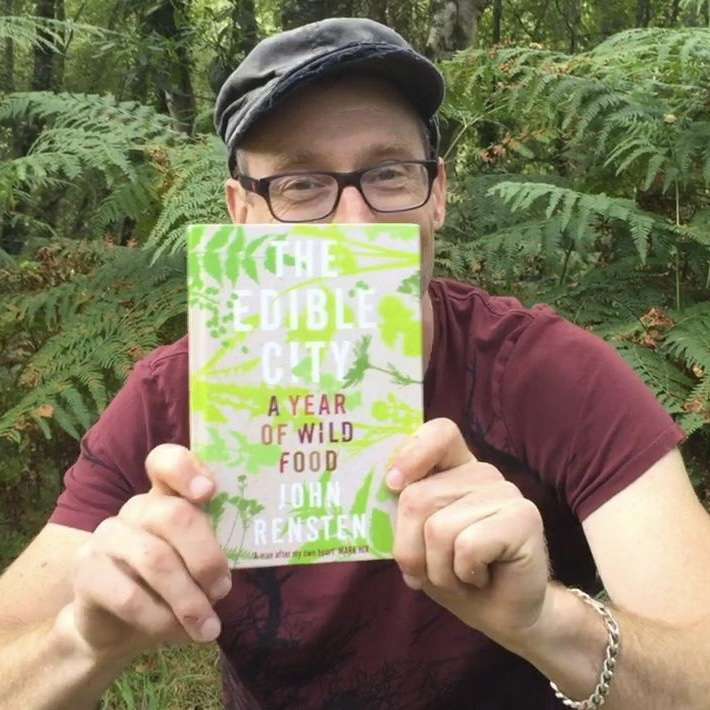


have you not wrote a book ?
thanks barb, I’m working on it right now